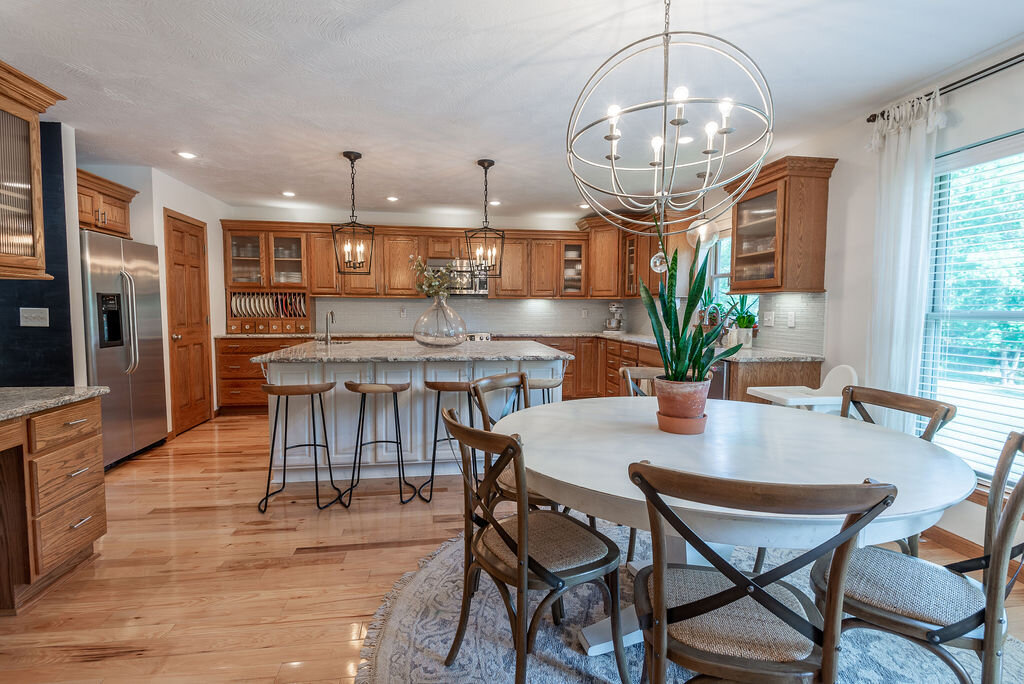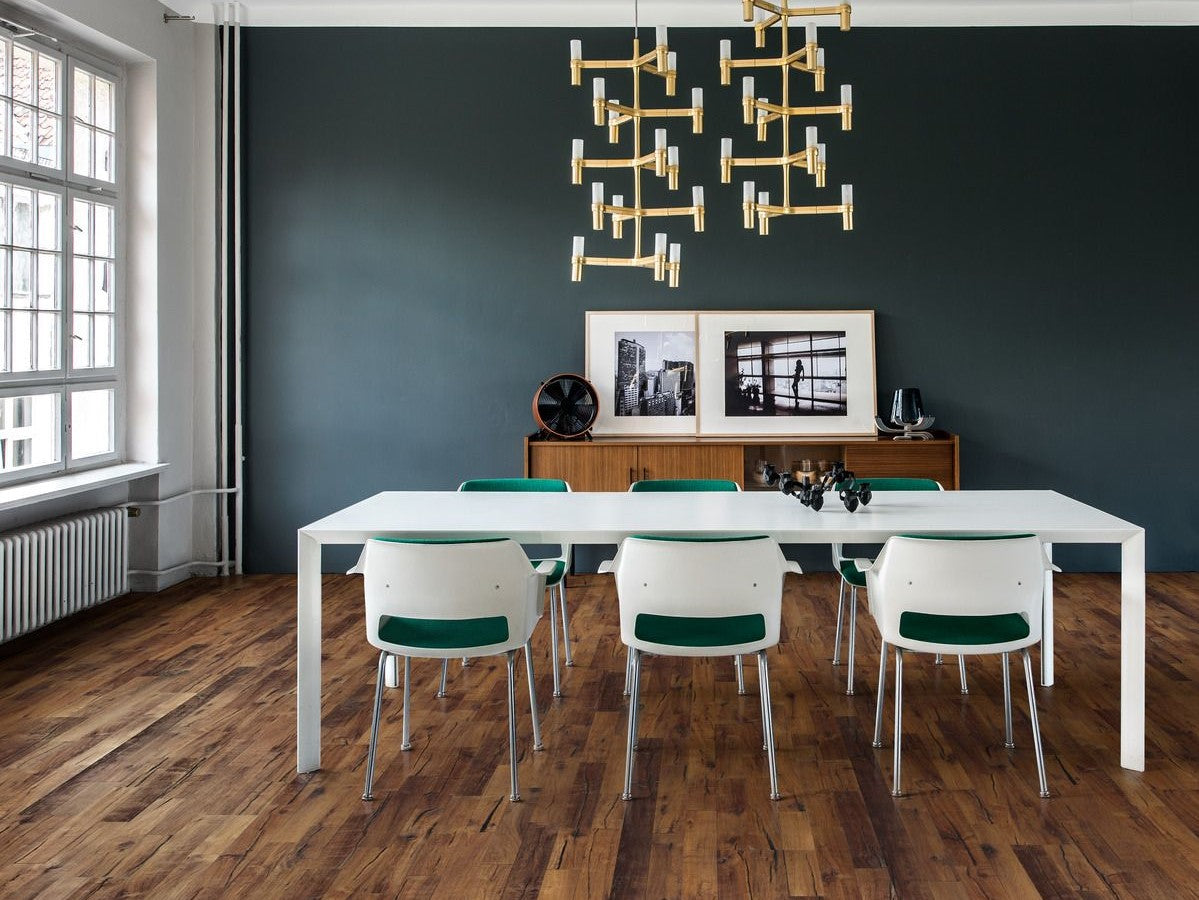A light-colored dining table complements dark wood floors beautifully. It creates a striking contrast that adds depth and visual interest to the space.
When choosing a dining table for your dark wood floors, consider light wood tones such as oak or birch for a warm and inviting look. Alternatively, go for a white or cream-colored table for a clean and contemporary feel. The light-colored dining table will create a focal point in the room and enhance the beauty of your dark wood floors.
It’s important to choose a color that harmonizes with the overall color scheme of your dining area. By selecting the right color for your dining table, you can create a stylish and cohesive look that ties the room together.
Best Colors To Pair With Dark Wood Floors
If you have dark wood floors and want to create a light and airy look, light neutral colors are a great choice. These colors can help brighten up the space and balance the richness of the dark wood. Opt for shades of white, cream, beige, or soft gray. These light neutral colors will create a clean and timeless aesthetic that complements the dark wood floors.
To make a statement and add a pop of color to your dining area, consider pairing your dark wood floors with bold contrasting colors. Colors like deep navy blue, emerald green, or vibrant red can create a striking contrast against the dark wood. Use these colors for accent pieces such as chairs, tablecloths, or wall art to create a bold and eye-catching look. Just make sure to balance the bold colors with neutral elements to avoid overwhelming the space.
To enhance the warmth and natural beauty of your dark wood floors, earthy and warm tones are an excellent choice. Shades like warm brown, rusty orange, or deep gold can create a harmonious and cozy atmosphere. Pair these earthy tones with natural materials like rattan, jute, or wood furniture to create a warm and inviting dining space.
Light Neutral Colors For Dark Wood Floors
Choosing the right dining table color can greatly enhance the overall aesthetic of your space. When complementing dark wood floors, light neutral colors offer a timeless appeal that effortlessly blends with various design styles. For a classic and elegant look, a white dining table creates a stunning contrast against the dark flooring. Its clean and crisp appearance brings a sense of brightness to the room. If you prefer a more subtle and sophisticated vibe, a beige dining table can add warmth and depth to the space. The neutral undertones of beige create a harmonious balance with dark wood. On the other hand, a gray dining table can provide a modern and minimalist touch. Its sleek and cool tones create a contemporary atmosphere, which pairs well with dark wood floors. Consider these light neutral colors to enhance the beauty of your dining area.
Bold Contrasting Colors For Dark Wood Floors
Choosing the right color for your dining table can make a significant impact on the overall aesthetics of your space. With dark wood floors, bold contrasting colors can bring out the beauty and create a stunning visual effect.
A blue dining table can provide a calm and serene ambiance in your dining area. The color blue is often associated with tranquility and relaxation, making it perfect for creating a peaceful atmosphere.
If you want to create a dramatic impact, a black dining table can do the trick. The color black exudes sophistication and elegance, adding a touch of luxury to your space. It also creates a striking contrast against dark wood floors, making it visually appealing.
Green Dining Table for Fresh and Vibrant Look:
For a fresh and vibrant look, consider a green dining table. The color green symbolizes nature and growth, bringing a sense of freshness and vitality to your dining area. It complements dark wood floors beautifully, creating a visually pleasing and lively atmosphere.

Earthy And Warm Tones For Dark Wood Floors
When it comes to choosing a dining table that complements dark wood floors, it’s all about finding earthy and warm tones that create a cohesive and inviting space. One excellent option is a brown dining table, as it adds a classic warmth that enhances the richness of the dark wood. The deep, rich hues of a rustic red dining table also provide a cozy atmosphere, making it a great choice for creating an intimate and inviting dining area. For a more natural appeal, an earthy green dining table can be an excellent choice. The green tones bring a touch of nature indoors and create a harmonious balance with the dark wood floors. Overall, selecting a dining table in earthy and warm tones will ensure a seamless and visually appealing look in your dining space.
Frequently Asked Questions Of What Color Dining Table With Dark Wood Floors
What Color Dining Table For Dark Floors?
A light-colored dining table would be a great choice for dark floors, creating a pleasing contrast. The light color will help to brighten the space and add a touch of freshness.
What Color Furniture Goes Good With Dark Hardwood Floors?
Dark hardwood floors look great with furniture in lighter colors like cream, beige, or white. These shades create a contrast that enhances the beauty of the flooring. Lighter furniture also makes the room feel more spacious and airy.
Should Dining Room Table Match Wood Floor?
Yes, the dining room table should match the wood floor for a cohesive and coordinated look. Matching the wood tones creates a harmonious and visually pleasing space. It enhances the overall aesthetic appeal and creates a sense of unity in the dining area.
How Do You Brighten A Room With Dark Wood Floors?
To brighten a room with dark wood floors, use light-colored furniture, area rugs, and curtains to create contrast. Opt for white or light paint on the walls to reflect more light. Incorporate mirrors to enhance the natural light and add lighting fixtures strategically to brighten the space.
Conclusion
To sum up, when choosing a color for your dining table to go with dark wood floors, consider factors such as the overall design scheme, the size of the space, and your personal preferences. Opt for contrasting colors to create visual interest and balance or choose a similar shade to create a cohesive look.
Remember to experiment and have fun with different combinations until you find the perfect match for your home.




